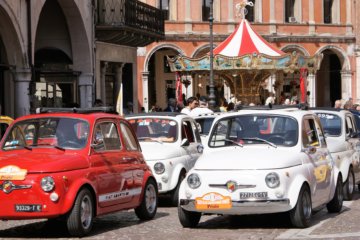However you approach it, the church is a striking sight. Looking for all the world like many a European-style, gothic church, it sits incongruously on the shore of the Golden Horn, seemingly in splendid isolation so that it can be better appreciated in the crowded and frenetic city of Istanbul. Of course, I am neglecting to mention the very busy road which runs in front of the church, between it and the water, but it really is possible to ignore it. Believe me – visit in the spring when the daffodils are in full bloom all around it, and you could be in an English county town or a pleasant, green Austrian valley.
There is, though, more to the Church of St. Stephen of the Bulgars than its unusual appearance in its Istanbul location. On closer investigation, you learn that the entire church and its contents are made of cast iron! It was made in pieces in Vienna, Austria in 1871. These pieces were then transported on 100 barges along the Danube, across the Black Sea, and down the Bosphorus to Istanbul, where they were put together like a giant Meccano set. An unusual idea and one which, you could argue, was not really necessary! However, the result is stunning. In the beautiful interior, you feel compelled to touch the pillars, pedestals, and other fixtures and fittings, and are genuinely surprised that they feel cold – the ageing process has given them the appearance of old, weathered wood which you expect to be warm.
The church was built to serve as the main church of the Bulgarian community living in Istanbul, and is still owned by their descendants today. There is no entrance fee to visit, but please put something in the collection box to help with the upkeep of this beautiful and unique church.
Join our mailing list

Sign up to receive our monthly newsletter. Keep up with what we're doing and be the first to receive special offers and insider tips.









